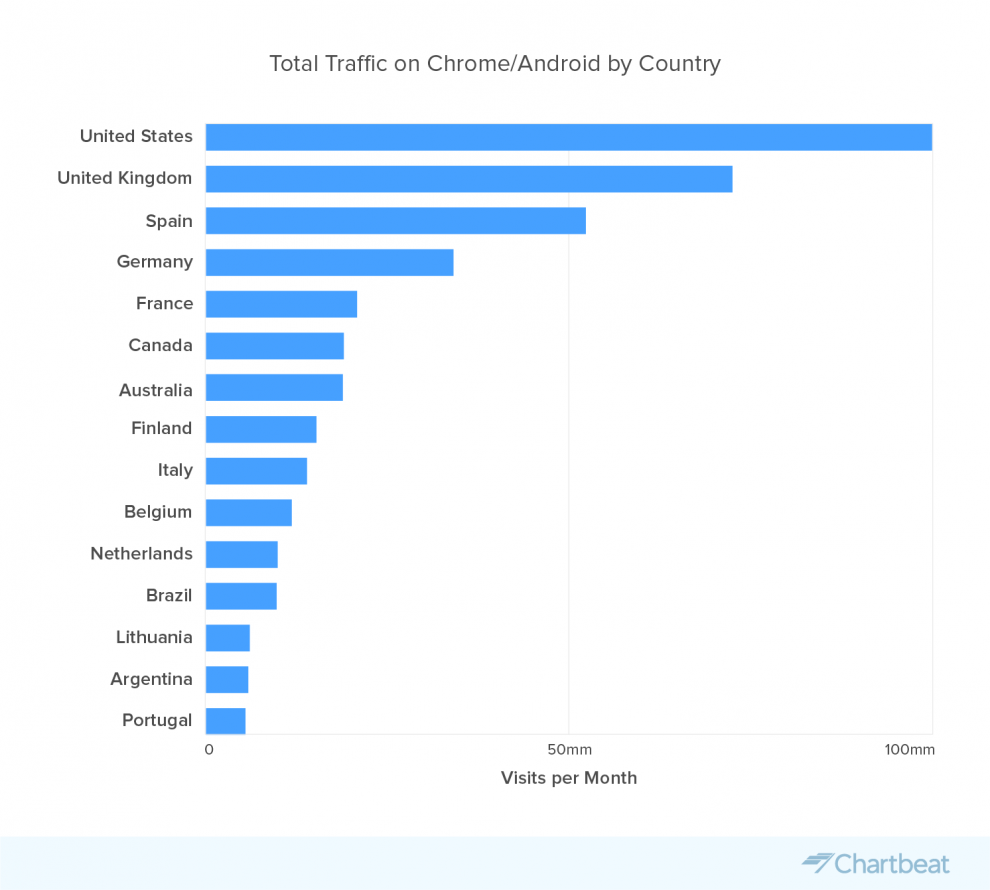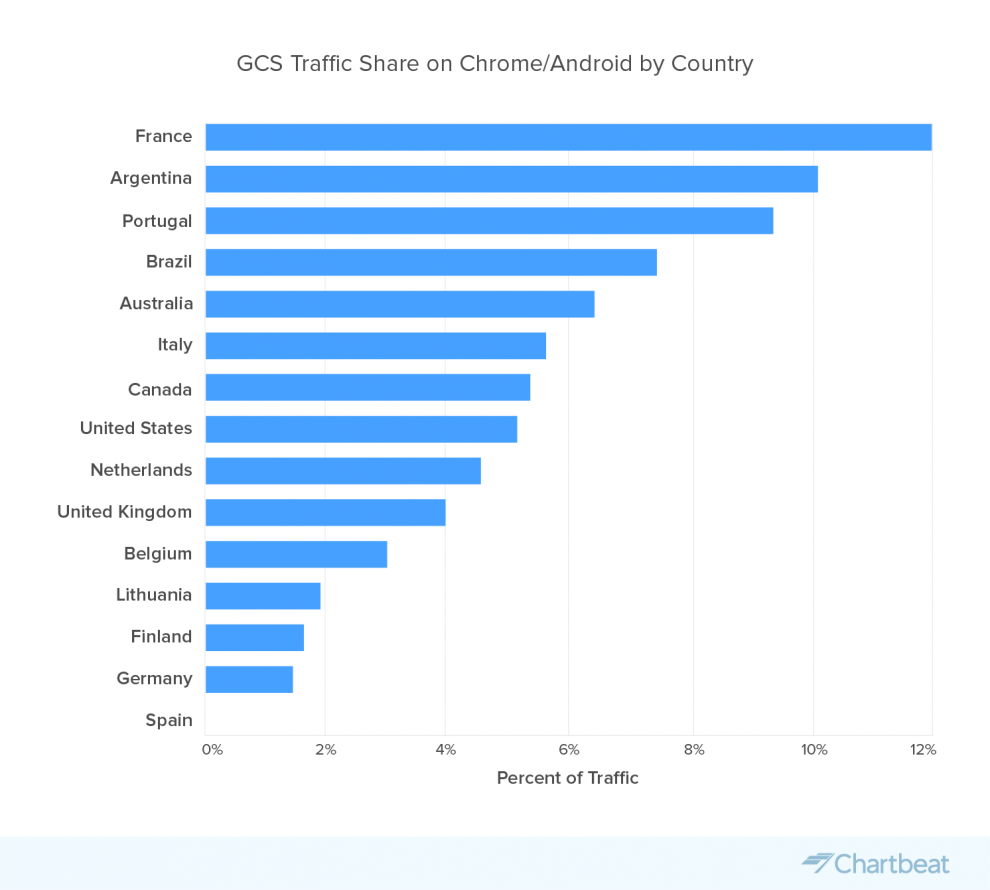When you open a new tab of Chrome on an iOS or Android device, Google provides an automated list of “Articles for you.” On Android, when a visitor clicks on one of these links, the referrer is set to www.googleapis.com/auth/chrome-content-suggestions. In our experiments, this is the only prominent Google Product where this referrer is set, allowing us to report on the volume of traffic coming from this particular channel.1 Given that, we’ve dubbed this traffic source on our dashboard as “Google Chrome Suggestions,” or GCS for short.
On iOS, unfortunately, a visitor who clicks one of these links receives no referrer and, hence, shows up as “dark social” traffic. Given that, the rest of the analysis in this piece will focus on traffic on Android only.
Across the last year, traffic from GCS has risen rapidly and is now approaching Twitter in magnitude.

One of the most peculiar attributes of GCS traffic is that it appears to have a strong geographical and language skew — when we look at the countries and websites that perform the highest in terms of GCS traffic, Latin America and India dominate the list, substantially over-indexing relative to their usual performance.
One might wonder if this is because Android usage is higher in these countries, and perhaps usage of GCS is higher simply because Android usage is higher. While our traffic data does show a higher rate of adoption outside of the US, this does not explain what we’re seeing.

In the above graph, we’re looking at the total volume of traffic from Chrome on Android.
While the U.S. dominates our network in terms of Android traffic, only about 6 percent of Chrome/Android traffic comes from GCS in the U.S. On the other hand, South American countries like Brazil and Argentina show substantially higher rates of GCS traffic.2

The one exception here is Spain, where we see no GCS traffic whatsoever. This is likely because Google has withdrawn from providing Google News and other services that link to publisher sites after a protracted legal battle.
Beyond where a story was published, what else can we say about which stories do well on GCS? While it’s difficult to predict whether an individual story will do well on GCS, we can examine some of the properties of top-performing GCS stories to look for clues.
Our first question was whether GCS performance stemmed from search performance. In other words, are stories that generate a high amount of search interest likely to do well on GCS? The answer, it seems, is mixed: Stories that do well on GCS are likely to also do well in search. According to our research, there was a moderately strong 0.43 correlation between GCS traffic and Google Search traffic for a random sample of 10,000 stories that received GCS traffic. On the other hand, the converse is not true: The overwhelming majority of stories getting traffic from Google Search on a given day do not receive any traffic from GCS. If we turn to other Google products, there seems to be even less of a relationship: There is essentially no correlation (0.12) when comparing the same stories’ traffic from GCS and Google News.
Because Google Search traffic has somewhat of an evergreen nature, next we wondered whether GCS surfaced old or new stories. The answer: GCS is strongly biased toward new stories, with over 97 percent of traffic from GCS happening on pages published in the past two days.3 By comparison, about 63 percent of Google Search traffic to articles lands on pages published in the previous two days.

Although GCS is biased toward recent stories, it’s also somewhat slower to pick stories up than Google Search. Whereas half of pages that get search traffic receive traffic from Google Search within an hour of publication, only about 5 percent of stories that show up in GCS do so within the first hour.
Because GCS surfaces articles recommended for a particular user, we also wondered if users were more likely to see links to sites they’d shown a previous affinity for, but we cannot find evidence of this. Visitors from GCS were, if anything, slightly less likely to have recently visited a site than visitors from Google Search.
So, with all of that data, where does that leave us? While much is still unknown about what drives a particular story to do well, or whether publishers have any levers to improve performance, there are a few points I’d like to leave you with:
For these sites, we encourage you to run your own analyses and experiments to help determine what drives GCS performance for your stories, and we encourage you to think about your GCS traffic as separate from your Google Search and Google News traffic.
For other sites, it’s probably best to focus your audience development efforts elsewhere.
As always, we’d love to hear your thoughts, questions, and ideas. Feel free to email me at josh@chartbeat.com or tweet to @joshuadschwartz.
Josh Schwartz is head of product, engineering, and data at Chartbeat, where a version of this piece ran.